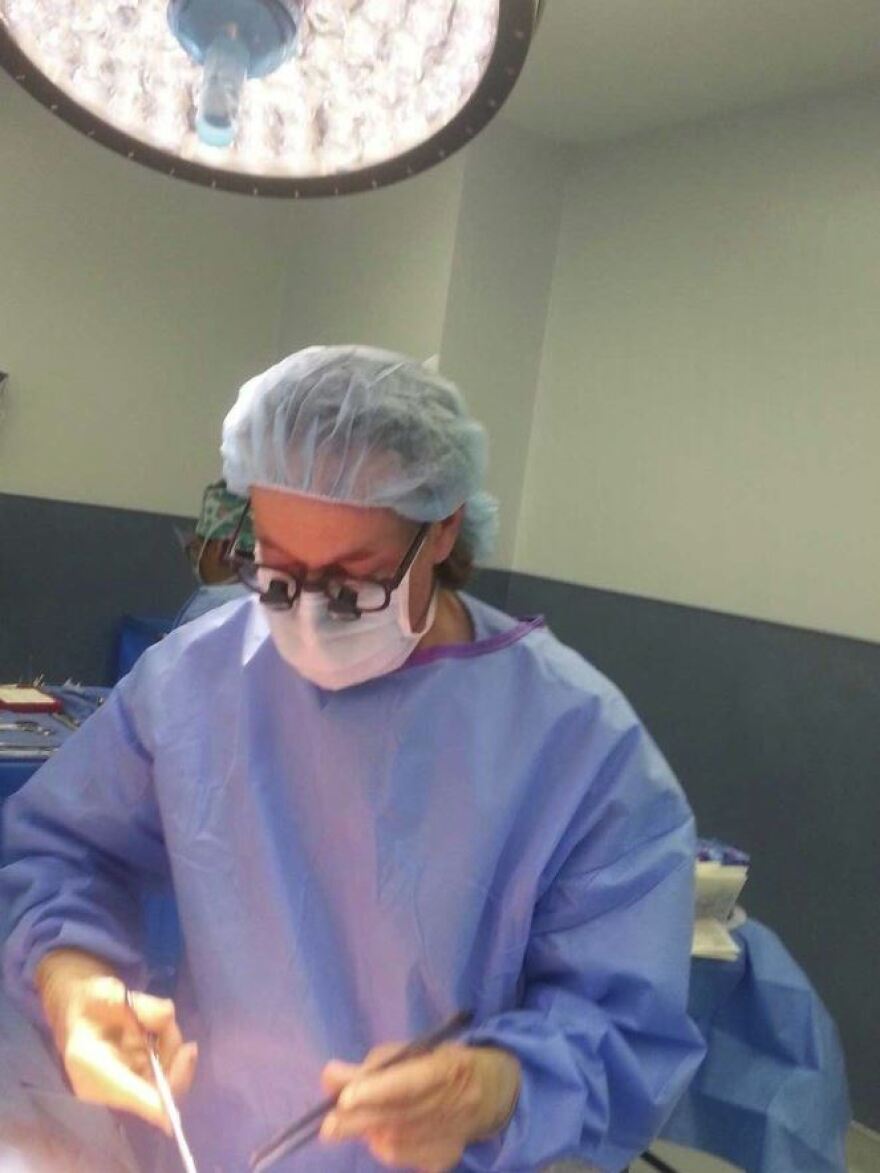The first successful living donor kidney transplant took place in 1984. Since that time, more than 50,000 people have had one of their two kidneys removed and implanted in someone who needed that organ to live.
In today’s TPR Lifeline, Bioscience-Medicine Reporter Wendy Rigby talks with Adam Bingaman, MD, of Methodist Specialty and Transplant Hospital in San Antonio about the need for more kidney donors.
Rigby: If a person needs a kidney, nationally the wait time for a kidney is three to five years. Now, in South Texas that wait time is six to eight years. What is different here, Dr. Bingaman? Why is the wait time so long?

Bingaman: We have a huge deficit of kidneys in the United States. And so people are waiting a long time. Now here in South Texas we have a large Hispanic population. Hispanics have a 1.5 times incidence of end stage renal disease compared to Caucasians. And so we see higher levels of kidney disease in this population. We have a lot of diabetes down here in South Texas. And diabetes is the number one cause of kidney disease. And so when we’ve got a lot of Hispanic population, we have a lot of diabetes, then we’re going to have a lot of kidney disease. And that’s what we have here, sadly, in South Texas.
How has your transplant program managed to perform so many living kidney transplant operations?
Right. Well because of this deficit that we’ve got in the United States of deceased donor kidneys available, We’ve had to concentrate on asking our patients ‘do you have anyone that can donate a kidney to you?’ What we tell people is ‘we’d love to be able to take your kidney, but we’re not going to transplant it into the person that you thought of because you don’t match. What we’re going is take your kidney and put it into somebody else who’s in the same situation, somebody else who also has a donor that isn’t a match. And we’re going to take that person’s donor and put it into your recipient. And we’re going to take your kidney and put it into the other recipient.” Essentially, exchanging kidneys.
And so that’s what called paired kidney operations?
That’s right. And so the first one of these exchange types of transplants in the United States was done in 2000. So this is a pretty young field. And now here we are 17 years later and thousands of these operations have now been done. We started a program at Methodist Specialty and Transplant Hospital back in 2008 saying ‘how can we get this done?’ And we started our own computer database. We built our own software program that the computer can find how we can put these matches together. We did our first exchange transplant here in San Antonio, in the state of Texas actually, a two-way exchange transplant in 2008. And we’ve gone on now to do more exchange transplant at our hospital than any hospital in the world.
How many patients were involved in the most complex series of operations your hospital ever set up?
Back in 2010, we had a 23 way exchange transplant that we were able to organize. We did 16 exchange transplants in three days. And then we took a pause. And then did seven more some weeks later. So that was the most complex set of transplant we did. Last year we did 48 exchange transplants at our hospital, again, leading the nation in doing these complicated sets of surgeries. This month, here in September, we’re planning on doing ten exchange transplants just at our hospital.
Is there a difference when you get a kidney from a live donor or a cadaver and why?
Kidneys from living donors work better and last longer than kidneys from deceased donors. And it’s very important to recognize that because our goal really isn’t to necessarily to get people transplanted as quickly as possible with whatever kidney we can find. Our goal really is to get people a kidney transplant so that they can live as long and healthy a life as possible. So if you can get a kidney that’s going to work better and last longer, that’s a better situation. The average kidney from a deceased donor these days we would expect to last 8 to 12 years, whereas the average kidney from a living donor more than 15 years. So a clear benefit in receiving a kidney from a living donor.
Do you think there will ever come a day when medical science will advance to the point where people will be able to get replacement kidneys that were grown on some sort of scaffolding?
I think a day will come where we will no longer be using kidneys from probably people. Whether we’re growing kidneys or whether we’re able to use kidneys from another animal source, for example, that have their genes engineered to look like humans. You know, I think that, look, we never want to put a limit on human imagination and technology. Because I think what we’re doing today could never have been imagined even 50 years ago or a generation ago. And so I think I’ve got a lot of faith in our kids and in our kids’ kids that that they’re going to be able to figure out a better way.
Dr. Adam Bingaman, thanks for your expertise.
Thank you. Appreciate it. Thanks very much, Wendy.
***For more information on becoming an organ donor, log on to www.donatelifetexas.org.

